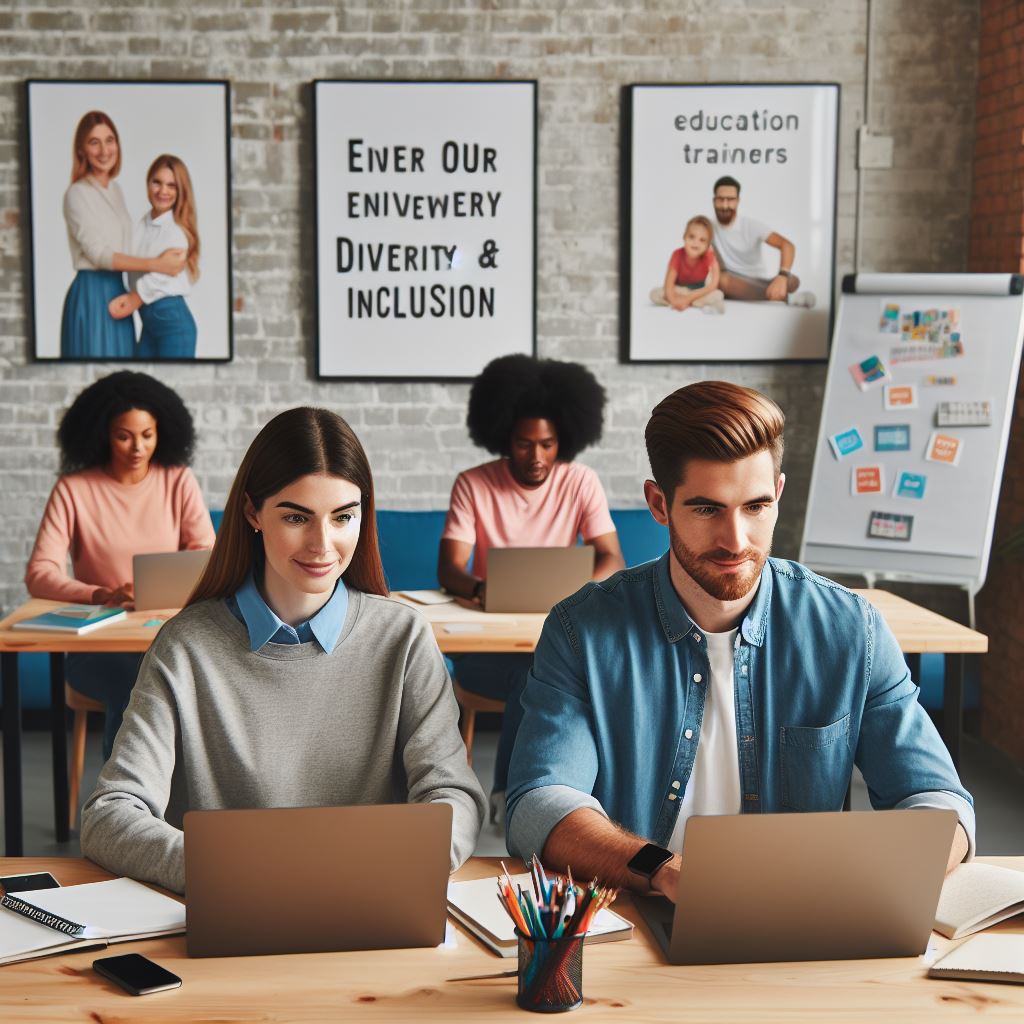Introduction
Definition of innovative training techniques in schools
Education is ever-evolving, and schools in New Zealand have embraced innovative training techniques to enhance student learning.
These techniques are characterized by their unique and creative approaches, focusing on active student engagement and promoting critical thinking skills.
Innovative training techniques in NZ schools have become crucial in preparing students for a rapidly changing world, where adaptability and creativity are highly valued.
Importance of innovative training techniques in NZ schools
One example of an innovative training technique is project-based learning. Students engage in hands-on projects that require them to collaborate, problem-solve, and think critically.
This approach not only helps students acquire knowledge but also encourages them to apply it in real-life situations, fostering a deeper understanding of the subject matter.
Another innovative technique is the integration of technology in the classroom.
New Zealand schools have recognized the power of technology in enhancing learning experiences and preparing students for future careers.
From interactive whiteboards and virtual reality simulations to online learning platforms, technology provides students with access to a wealth of resources and opportunities for self-directed learning.
This blog post explores some of the innovative training techniques adopted by NZ schools.
Furthermore, NZ schools have also adopted personalized learning approaches. This technique recognizes that each student has unique strengths, interests, and learning styles.
By tailoring instruction to individual needs, teachers can create a more engaging and effective learning environment, promoting student success and motivation.
Therefore, NZ schools have embraced innovative training techniques to meet the evolving needs of students.
Through project-based learning, technology integration, and personalized approaches, schools aim to foster critical thinking, adaptability, and creativity.
These techniques empower students to become lifelong learners, equipping them with the skills necessary to thrive in an ever-changing world.
Experiential Learning
Definition and Explanation of Experiential Learning
Experiential learning is a hands-on approach to education that actively engages students in real-life experiences and encourages reflection and analysis.
It is a process in which students learn by doing, reflecting, and applying their knowledge in practical situations.
- Active engagement: Experiential learning requires students to actively participate in activities that are designed to replicate real-world scenarios.
- Reflection: After engaging in the experience, students are encouraged to reflect on their actions, outcomes, and lessons learned.
- Application: Experiential learning emphasizes the application of theoretical knowledge in practical situations, allowing students to see the relevance and importance of what they have learned.
Examples of How NZ Schools Use Experiential Learning
- Outdoor Education: Many NZ schools utilize outdoor education programs to provide experiential learning opportunities.
Students participate in activities such as hiking, camping, and team-building exercises, fostering skills like teamwork, problem-solving, and resilience. - Internships and Work Experience: Schools often partner with local businesses and organizations to offer students internships and work experience placements.
This allows students to apply classroom knowledge in real-world settings, develop crucial job skills, and make informed career choices. - Project-based Learning: NZ schools incorporate project-based learning into their curriculum, where students work on long-term projects that require research, collaboration, and problem-solving.
This approach allows students to delve deep into a topic, applying their knowledge and skills to create meaningful outcomes.
Benefits and Challenges of Experiential Learning in Schools
Benefits
- Improved retention and understanding: Experiential learning enhances students’ ability to retain information and understand concepts by connecting theory to practice.
- Development of vital skills: This approach helps students develop crucial skills such as critical thinking, decision-making, communication, and adaptability.
- Motivation and engagement: Hands-on experiences increase student motivation and engagement, leading to a more meaningful learning experience.
- Real-world preparation: Experiential learning equips students with practical knowledge and skills that are transferable to real-world situations, enhancing their employability.
Challenges
- Resource limitations: Providing experiential learning opportunities requires careful planning, resource allocation, and support from school administration.
- Assessment difficulties: Assessing experiential learning can be challenging, as traditional assessment methods may not adequately capture the holistic learning that takes place.
- Time constraints: Incorporating experiential learning requires time for planning, execution, and reflection, which may be limited within the constraints of a packed curriculum.
In review, experiential learning is a valuable tool in NZ schools, providing students with practical knowledge, skills, and personal growth.
By actively engaging students in real-life experiences and encouraging reflection, schools can create a dynamic and effective learning environment.
Despite the challenges, the benefits of experiential learning outweigh the limitations, making it a crucial aspect of education in New Zealand.
Read: Edu Consultancy: Tech & Innovation
Project-Based Learning
Definition and explanation of project-based learning
Project-based learning (PBL) is a teaching method that immerses students in real-world projects.
It involves students exploring and solving complex problems through collaboration and hands-on experiences.
PBL emphasizes critical thinking, creativity, and communication skills, preparing students for future challenges.
Examples of how NZ schools incorporate project-based learning
- In a science class, students conduct experiments to understand the impact of pollution on local water sources.
- In a social studies class, students create a multimedia presentation about New Zealand’s historical landmarks.
- In an English class, students write and perform a play based on a famous novel.
- In a math class, students design and construct a bridge using trigonometric principles.
- In a technology class, students develop a smartphone application to address a community problem.
Benefits and challenges of project-based learning in schools
Benefits
- Enhances student engagement and motivation by making learning more meaningful and relevant to their lives.
- Develops problem-solving and critical thinking skills, preparing students for challenges beyond the classroom.
- Encourages creativity and innovation as students have the freedom to explore different solutions and approaches.
- Promotes collaboration and teamwork, improving communication and interpersonal skills.
- Fosters a deeper understanding of content and concepts as students apply them in real-world scenarios.
Challenges
- Requires careful planning and coordination to ensure projects align with curriculum goals and learning outcomes.
- May be time-consuming, as projects often involve multiple stages and extended periods of work.
- Requires a shift in teaching roles, with teachers becoming facilitators and guides rather than direct instructors.
- Assessment can be challenging as traditional methods may not capture the full range of skills developed through PBL.
- Some students may struggle with the open-ended nature of projects and require additional support and scaffolding.
Overall, project-based learning offers an innovative and engaging approach to education in New Zealand schools.
By immersing students in real-world projects, PBL equips them with the skills and knowledge needed for success in the modern world.
Read: Interviews with Leading NZ Educators
Technology Integration
Importance of technology integration in schools
- Enhances student engagement and motivation in learning.
- Prepares students for the digital world they will live and work in.
- Provides access to a wide range of resources and learning opportunities.
- Fosters collaboration and communication skills among students.
- Allows for personalized and differentiated instruction.
Examples of innovative technology integration in NZ schools
- Use of interactive whiteboards and projectors in classrooms.
- Implementing coding and robotics programs in the curriculum.
- Using virtual reality to enhance learning experiences.
- Utilizing online platforms and tools for collaborative projects and research.
- Integrating digital storytelling techniques to promote creativity.
Benefits and challenges of technology integration in schools
Benefits
- Improved academic performance and achievement.
- Enhanced critical thinking and problem-solving skills.
- Increased student motivation and engagement.
- Ability to provide personalized and differentiated instruction.
- Preparation for future career opportunities.
Challenges
- Costly initial investment in technology infrastructure and devices.
- Keeping up with rapidly evolving technology tools and platforms.
- Ensuring equitable access to technology for all students.
- Managing and filtering online content for appropriate educational use.
- Providing sufficient professional development and support for teachers.
Essentially, technology integration plays a vital role in New Zealand schools by enhancing student engagement, preparing them for the digital world, and providing a wide range of learning opportunities.
Innovative examples include the use of interactive whiteboards, coding programs, virtual reality, and digital storytelling.
While there are numerous benefits, schools also face challenges such as cost, keeping up with technology advancements, ensuring equitable access, content filtering, and providing teacher support.
Overall, integrating technology in schools is crucial for preparing students for success in the modern world.
Personalized Career Consulting
Unlock your potential with expert career advice tailored to your goals. Get personalized guidance and actionable steps toward your dream career in New Zealand.
Get StartedRead: Salary Trends for NZ Edu Experts

Personalized Learning
Definition and explanation of personalized learning:
- Personalized learning is an approach that tailors education to each student’s unique needs, interests, and abilities.
- It moves away from a one-size-fits-all model to a more tailored and student-centered approach.
- In personalized learning, students have more agency and control over their learning process.
Examples of personalized learning approaches in NZ schools
- Project-based learning: Students collaborate on projects that interest them, integrating multiple subjects.
- Individualized learning plans: Each student creates a plan that outlines their goals, interests, and learning strategies.
- Competency-based assessment: Students progress at their own pace, demonstrating mastery of skills and knowledge.
Benefits and challenges of personalized learning in schools
Benefits
- Improved student engagement and motivation as learning is relevant to their interests and goals.
- Enhanced student ownership of learning, promoting autonomy and self-directedness.
- Increased opportunities for personalized feedback, fostering individual growth and development.
- Greater focus on students’ strengths and weaknesses, addressing their specific learning needs.
- Promotion of critical thinking, problem-solving, and creativity through personalized learning approaches.
Challenges
- Teacher workload and time constraints in developing and implementing personalized learning approaches.
- Resource limitations, including technology and materials needed to support personalized learning.
- The requirement for ongoing professional development to ensure teachers are equipped with the necessary skills.
- Potential inequities in access to personalized learning opportunities for all students.
- The need for a shift in classroom culture and mindset to support personalized learning approaches.
Personalized learning holds great potential in New Zealand schools, allowing students to take ownership of their education and fostering deeper engagement and motivation.
By tailoring learning experiences to individual needs, interests, and abilities, students can excel academically and develop essential skills for the future.
However, the implementation of personalized learning approaches also presents challenges, such as ensuring equitable access for all students and providing necessary support to teachers.
Despite these challenges, personalized learning offers a promising path towards a more student-centered and effective education system in New Zealand.
Read: NZ Edu Policies: Consultant’s View
Collaborative Learning
Definition and Explanation of Collaborative Learning
Collaborative Learning is a teaching method where students work together towards a common goal.
Collaborative Learning encourages active participation and engagement, promoting critical thinking and problem-solving skills.
It involves students sharing ideas, analyzing information, and making decisions collectively.
Examples of Collaborative Learning Strategies in NZ Schools
- Group Projects: Students collaborate in small groups to research, plan, and present on a specific topic.
- Peer Tutoring: Older students mentor and support younger students in academic subjects.
- Cooperative Learning: Students work in teams to complete tasks, fostering mutual understanding and respect.
- Role-playing: Students enact scenarios to enhance understanding of complex concepts or historical events.
Benefits and Challenges of Collaborative Learning in Schools
Benefits
- Enhanced Learning: Collaborative learning promotes active engagement, deeper understanding, and knowledge retention.
- Improved Social Skills: Students develop communication, problem-solving, and teamwork abilities.
- Increased Motivation: Collaborative learning creates a supportive and stimulating learning environment.
- Diversity Appreciation: Students learn to respect different perspectives and appreciate diverse backgrounds.
Challenges
- Unequal Contributions: Some students may dominate discussions while others remain passive.
- Conflict Resolution: Group dynamics can cause conflicts, requiring effective conflict resolution strategies.
- Time Management: Managing group tasks and coordinating schedules can be challenging.
- Individual Assessment: Determining individual contributions and evaluating each student’s performance can be complex.
Collaborative learning in New Zealand schools has shown promising results in fostering essential skills among students.
Teachers play a crucial role in facilitating and guiding collaborative learning experiences.
They encourage open communication, establish clear goals, and provide necessary resources and guidance.
Collaborative learning also aligns with the New Zealand Curriculum’s focus on student-centered and inquiry-based learning approaches.
For example, at ABC Primary School in Auckland, collaborative learning is embedded across the curriculum.
The school organizes regular group project days where students are grouped heterogeneously to enhance peer learning.
These projects involve students from different age groups working together, fostering inclusivity and cooperation.
Another effective strategy is the use of online platforms, such as Google Docs or Moodle, which allow students to collaborate virtually.
These platforms facilitate real-time collaboration, document sharing, and feedback exchange.
While collaborative learning offers numerous benefits, it’s crucial to address the challenges that may arise.
Teachers should promote equal participation and give every student a voice.
They should also provide guidance on conflict resolution and teach effective communication skills.
Ultimately, collaborative learning is a powerful education strategy that promotes active engagement, critical thinking, and interpersonal skills.
By implementing collaborative learning strategies, New Zealand schools are preparing students for the future, where collaboration and communication play vital roles.
Conclusion
Recap of the innovative training techniques discussed
In this section, we explored several innovative training techniques that are being implemented in New Zealand schools.
We discussed the use of virtual reality and augmented reality to enhance learning experiences.
Additionally, we explored the benefits of project-based learning and the integration of technology in classrooms.
Importance of implementing innovative training techniques in NZ schools
Implementing innovative training techniques in New Zealand schools is crucial for preparing students for the future.
By incorporating technologies like virtual reality and project-based learning, we can create engaging and interactive learning environments.
These techniques foster critical thinking, problem-solving skills, and creativity.
Call to action for educators and policymakers to further support and promote innovative training techniques in schools
It is essential for educators and policymakers to support and promote the use of innovative training techniques in schools.
By investing in training programs and providing resources, we can ensure that students have access to the latest educational technologies.
This will empower them to become lifelong learners and prepare them for a rapidly changing world.
Lastly, innovative training techniques have the potential to transform education in New Zealand schools.
By embracing these techniques, we can create a dynamic and inclusive learning environment that nurtures the skills and abilities of our students.
Let us continue to support and promote these techniques to ensure a bright future for our education system.




